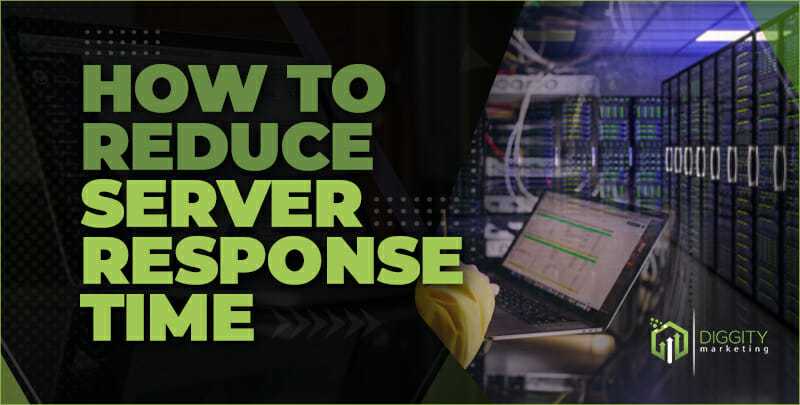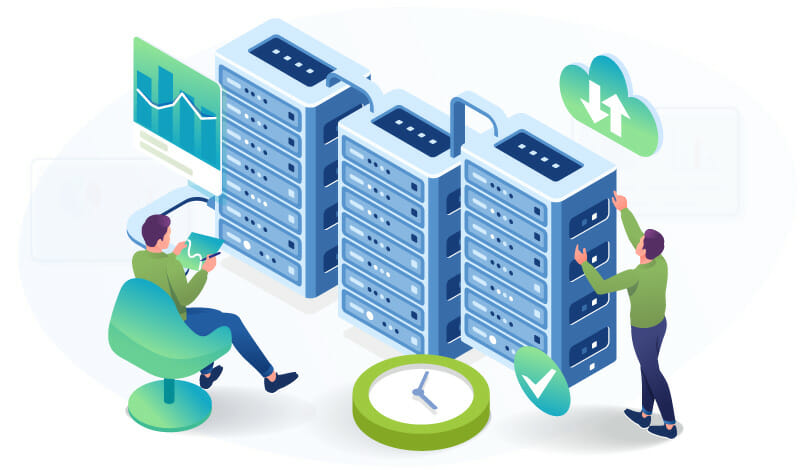Did you know that for every millisecond your users wait to load your website, you’re potentially losing customers? And if it’s over three seconds, you could lose more than 50% of visitors. (1)
Today’s consumers expect most things on demand. From pizza to packages to taxis, we expect it fast. And this is even more true for our sites. And I can not stress this enough.
If your server response time is too long, chances are, customers will try their luck elsewhere. That means you can lose customers, lose business, and lose money—all because you didn’t take the proper steps to improve your page load time and performance.
As an experienced web performance expert, I’ve created this comprehensive guide for those concerned about their site’s load times and the potential impact on their bottom line. By the end of this guide, you’ll possess in-depth knowledge on how to reduce response times and boost customer engagement, ultimately driving profits.
Table Of Contents
- What Is Server Response Time, Exactly?
- 4 Ways To Reduce Server Response Times (TTFB)
- Which Factors Affect The Load Speed Of A Website?
- How Fast Is a “Good” Server Response Time?
- Why Time To First Byte (TTFB) Is Important For SEO
- Tools To Test and Improve Server Response Time & TTFB
- Summing Up: What To Do Now
- Frequently Asked Questions (FAQ)
- References
What Is Server Response Time, Exactly?
Server Response Time is how long it takes for a web server to respond to a request from a user.
Whenever you click on a link, type in a site address in the URL bar, or access a web page, you request a server to view the site in question. The response time is the amount of time between your HTTP request and the server to respond to that request. Or, in other words, the time it takes to begin rendering the page’s info for you.
Web response times are measured in TTFBs. What is TTFB? It means “Time To First Byte”, or how many milliseconds passed between your HTTP request and the server’s reply.
4 Ways To Reduce Server Response Times (TTFB)
You can improve server response time (or TTFB) in many ways. But, you can break it down to four crucial steps:
1. Choose The Right Host And Server
This first step is the most crucial because everything else will follow—what hosting servers you can use, how many resources you’ll have to handle users, what kind of response times you can expect off the bat, and your customization options as well.
Compare and contrast different options (WPX Hosting, Nginx, and Apache are some of the names that immediately come to mind) to find one that is affordable, complete, and can be scaled up as your needs grow.
2. Optimize Your Web Server
After choosing your hosting provider and server, you have the option to configure the settings. It might be a little intimidating to do so, especially if you don’t have any prior work doing so. However, optimizing things like—enabling a cache, using a content delivery network & making sure you use HTTP/2—will make a huge difference in reducing your website’s response time. Plus, it’s absolutely free to do.
3. Eliminate Bloat
In the process of building your WordPress website and creating content, it can be really easy to weigh down your WordPress site performance with unnecessary bloatware (bloatware being programs/apps/plugins that take up space without providing much value). This is because third-party apps, duplicate pages, and CSS/Javascript files take up your server’s resources.
Eliminate bloat by removing the things you don’t need. This includes uninstalling plugins you don’t use, removing non-responsive images, and trimming down your code.
4. Optimize Your Resources
The next thing you can do to fix response time and WordPress site performance on your hosting provider is by making the most out of the server resources you currently have. This includes combining files when possible, minifying CSS and Javascript codes, and compressing images to decrease their file size.
Dean Hume, software developer, and author praised the use of responsive images in image optimization, saying this: “By using responsive images, you can tailor the image sizes to suit the web browser’s viewport and in turn, save on the total download size of your pages…You can save your users bandwidth and ensure speedy web server response times at the same time!” (2)
Which Factors Affect The Load Speed Of A Website?
If you’re not getting the times you expected (or were promised), there are a few things you can look at when figuring out how to reduce initial server response time.
Website traffic: If there are more web users clicking around your website than it can handle, it could slow down your TTFB. This may even prevent some users from accessing your website at all.
Settings: As we’ve mentioned before, if you’re not optimized, your users will be faced with slower reaction times.
Caching: Caching helps to render your content faster and more efficiently. Instead of making a new call every single time, the the caching plugin allows the web browser to pull up the assets from a local cache, accelerating the process.
Bloated resources: Websites with too many plugins, apps, extensions, pages, and images will naturally take more time to load than sites with less.
Web hosting: Sometimes, the problem is simply your web host provider. If it’s dirt cheap or unreputable, you might not be getting the latest equipment. You might also be sharing bandwidth with dozens, hundreds, or even thousands of other WordPress sites.
How Fast Is a “Good” Server Response Time?
A good server response time, according to Google, is under 200 milliseconds. (3)
When Google rolled out ‘The Speed Update’ in July 2018, having a quick first byte time was crucial. The update negatively impacted sites delivering a slow server response time, causing their search engine ranking to go down (more on this later).
Why Time To First Byte (TTFB) Is Important For SEO
While things like content, link building, and anchor text analysis are often cited as the most crucial SEO practices (and rightly so), speed of the page is a pretty significant factor as well, that many site owners mistakenly overlook. So, does your server’s response time really matter or is it just another thing for you to think about?
That said, page loading time and performance is a major factor in the user experience. Even if you have the best website in the world, who is going to benefit if it takes forever for page content to load?
Because of this, websites with very slow response times can be penalized with lower rankings on the search engine results page. That means if someone searches for keywords that are relevant to your site, you will appear lower on the results—or maybe not even at all.
You could lose thousands of potential customers with a long initial response time.
Tools To Test and Improve Server Response Time & TTFB
If you want to be sure your site is up to standard, there are many ways to check your website speed and performance. Here are the top ones I recommend.
1. GTmetrix
GTmetrix is a tool that allows you to analyze how fast your server responds, monitor your web page, and test your site speed on mobile. There are free and pro versions available.
2. KeyCDN
KeyCDN is a content delivery network that you can use to fix slow server response time and site crawlability. They also have a free speed tester that you can use. Sign up not required.
3. Pingdom
Through Pingdom, you can monitor your site to get up-to-date info on its performance, speed, and the steps you can take to improve your site and initial server response time.
4. Google Page Speed Insights
If you’re reducing your page response time for search engine optimization, there’s no better speed tester than the one from Google themselves: Google Page Speed Insights.
5. Web Page Test
The site may look a little outdated, but Web Page Test allows you to test your site speed and page performance from different locations and even devices.
6. Varvy
Varvy has a simple and straightforward website speed checker. They also have tons of resources on how to improve slow response time and page speed performance as well.
7. Dotcom-Monitor
With their 30-day free trial, you can experience all of the features Dotcom-Monitor has to offer: monitoring, speed testing, and more.
8. Yellow Lab
You can simulate the TTFB from any device using this no-frills open source page load time checker from Yellow Lab.
9. WebSitePulse
WebSitePulse has a variety of free tools that allow you to check whether specific sections of your site and core web vitals are working properly. Their tools can help you easily detect when things malfunction, and allow you to fix them immediately.
Summing Up: What To Do Now
Your initial server response time significantly impacts customer experience and your SERP rankings. Slow load speeds and performance can turn away potential customers and make your website less visible, even to the people who are searching for it.
There are many ways to reduce initial server response time, like choosing the right web hosting provider, optimizing your server, and removing unnecessary bloatware. But the first step to better server performance begins with finding out what your actual server response time is.
Try out the methods above for yourself! And use that insight to make your website faster, more efficient, and ultimately more profitable.
And if you are still having trouble, we recommend using a service such as WP Speed Fix to do it for you.
Frequently Asked Questions (FAQ)
What’s a good TTFB?
A good TTFB is 200-500ms. Often considered the same as server response time, the recommended TTFB is 200-500ms, or better.
How do I fix a slow website performance?
Enable caching
Remove slow plugins
Optimize your images
Minify your code
Use a content distribution network (CDN)
What is server optimization?
Server optimization refers to techniques that increase the data processing and performance of servers.
Why is my server slow?
Your server could be slow because the server itself is overloaded or unoptimized, but also because your connection to the server might be laggy.
References
https://www.thinkwithgoogle.com/marketing-resources/data-measurement/mobile-page-speed-new-industry-benchmarks/
https://www.keycdn.com/blog/web-performance-advice-2018
https://developers.google.com/speed/docs/insights/Server
















